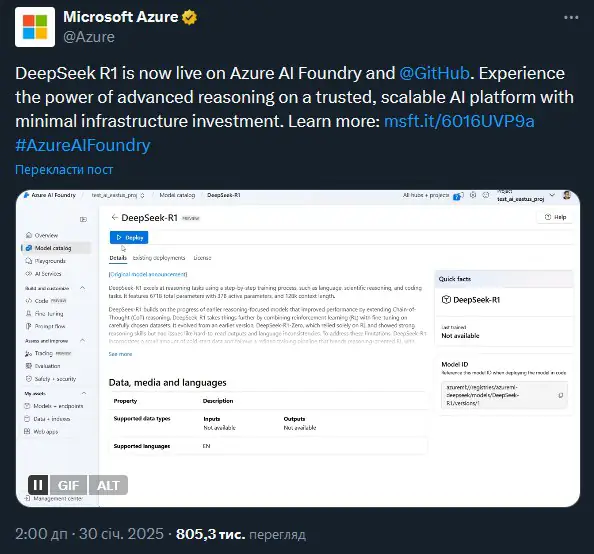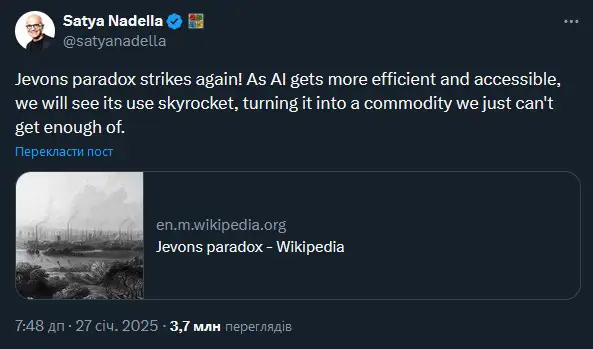© ROOT-NATION.com - Use of content is permitted with a backlink.
Sam Altman aimed to outmaneuver Microsoft using Bill Gates’ own approach. However, it seems Microsoft is now leaning toward DeepSeek.
The world of artificial intelligence is undergoing a transformation and will likely never be the same. The Chinese company DeepSeek has generated significant buzz, creating ripple effects across the industry. This shift is particularly relevant for OpenAI and its key partner, Microsoft.
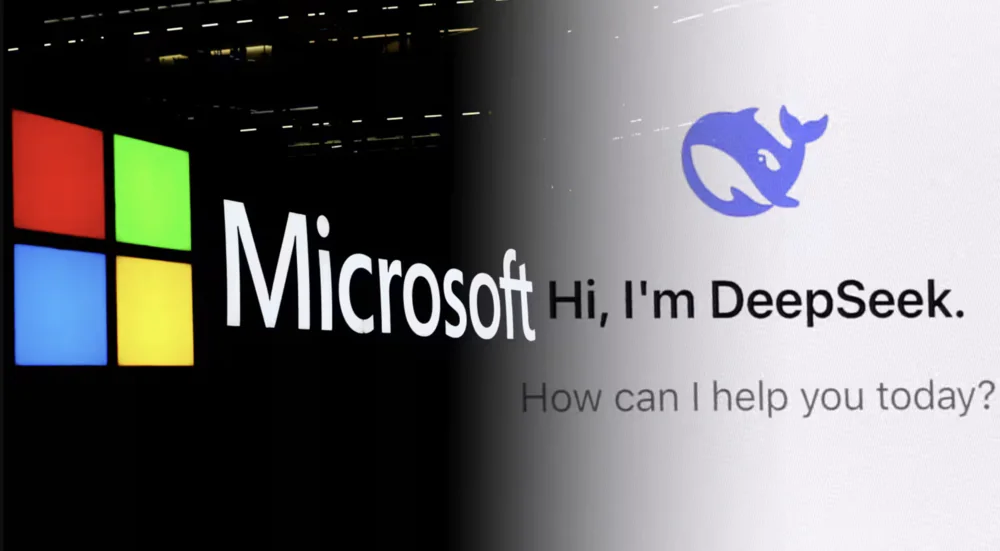
Read also: What is DeepSeek and Why is Everyone Talking About It?
And how well it all started
The supposed partnership between OpenAI and Microsoft is facing increasing strain. Watching both companies struggle to break free from their mutual dependence—without success—might almost seem amusing if not for the fact that trillions of dollars are at stake.
There is no doubt that OpenAI has been the driving force behind the current AI revolution, with Microsoft as its primary financial backer. Both companies have benefited immensely from this unprecedented partnership, which cannot be overstated. Neither would have achieved such market dominance without the support of the other. A superficial analysis might suggest that the boards and executives of both companies share a friendly rapport—perhaps even a form of camaraderie. But even if that isn’t the case—after all, this is the cold, calculated world of big business and vast sums of money—they are at least united by a common goal.
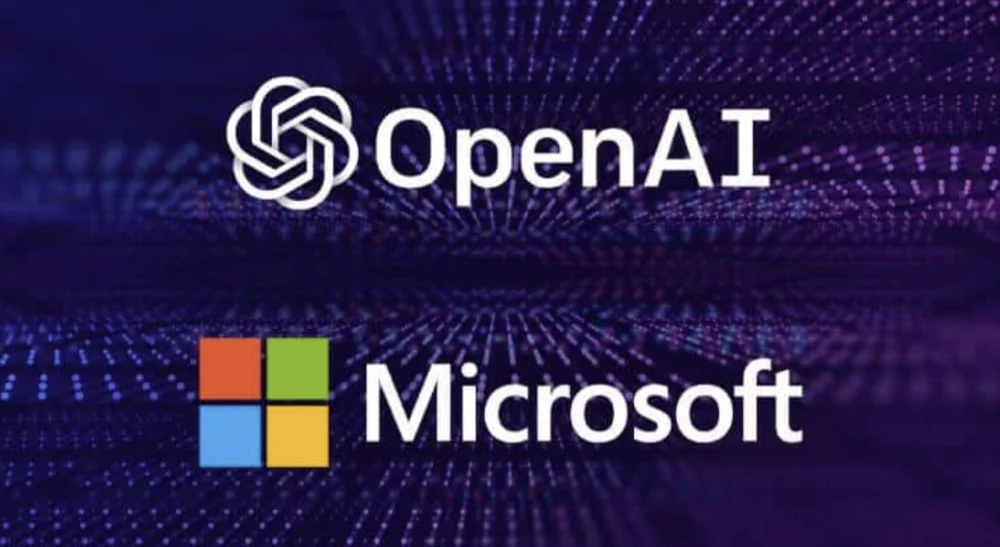
The behind-the-scenes events at the headquarters of both companies are, at best, a frivolous thing to speculate about, and probably a waste of time. The problem is that not all actions can be conducted in secret, and some even require public exposure to be effective. From these reports, one could sketch a picture of a very rough, even non-collaborative process. It’s worth recalling that Microsoft initially appeared somewhat naive. However, today, it is using much of its business strength to implement changes that would prevent OpenAI from spreading its wings too much and eventually becoming independent. Interestingly, it was Sam Altman who first began playing the secret game regarding independence. And he could have outsmarted Microsoft’s Nadella, were it not for the sudden market intervention… from the Chinese.
Read also: Microsoft Copilot: Game-Changer or False Path?
Microsoft + OpenAI = </3
The current revolution in generative artificial intelligence gained real momentum when Microsoft recognized the potential of an early version of GPT. While the company had been a leader in AI development—working on its own language models—GPT was far more advanced than anything it had in-house. Microsoft chose to invest heavily in OpenAI, securing preferential access to its technology. More than just a strategic partnership, this was a decisive bet on the future of AI. By committing vast resources to OpenAI and AI development as a whole, Microsoft made one of the most significant shifts in its history—on par with its push to establish a presence in the public cloud.
It’s important to understand that Microsoft will survive—and likely even profit—regardless of whether this AI revolution ultimately succeeds or fails. A significant portion of its support for OpenAI isn’t in direct financial investment but rather through a form of barter: providing the necessary IT infrastructure for OpenAI’s operations and growth. Altman’s company not only receives funding from Microsoft but also gains access to Azure’s vast computing resources to train its next-generation models. However, there was another crucial aspect to this deal—Microsoft’s financial safeguards, ensuring it remains protected even if OpenAI stumbles.
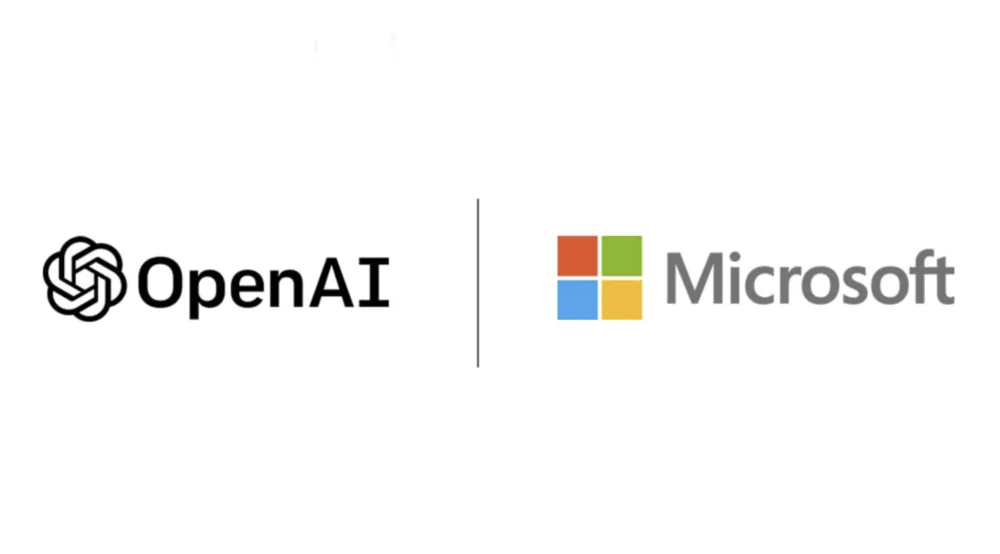
OpenAI remains an independent entity and is free to collaborate with any company, including those in direct competition with Microsoft. However, as long as OpenAI wants to maintain its partnership with Microsoft, it is required to host its services on Microsoft Azure. This means that whenever OpenAI signs a deal with companies like Apple, Opera, or any other partner, a portion of the revenue automatically flows to Microsoft as part of standard service fees. Even in the unlikely scenario where generative AI turns out to be an overhyped business bubble, Azure would still generate substantial profits—not just for itself but for Microsoft as a whole. The reason is simple: OpenAI’s technology, like that of its competitors, demands an enormous amount of computing power and energy. These operational costs ensure that, no matter how the AI market evolves, Microsoft remains in a strong position to capitalize on its cloud infrastructure.
The key distinction is that Microsoft could, if necessary, move forward without OpenAI. Its services are already profitable, its market capitalization continues to grow, and its overall business remains stable. The same cannot be said for OpenAI. Even with its groundbreaking technology, OpenAI still depends on Microsoft’s cloud infrastructure, computing power, and financial resources—advantages that not every player in this space can offer. And with Microsoft’s deep cash reserves, the company has little reason to worry about its next move.
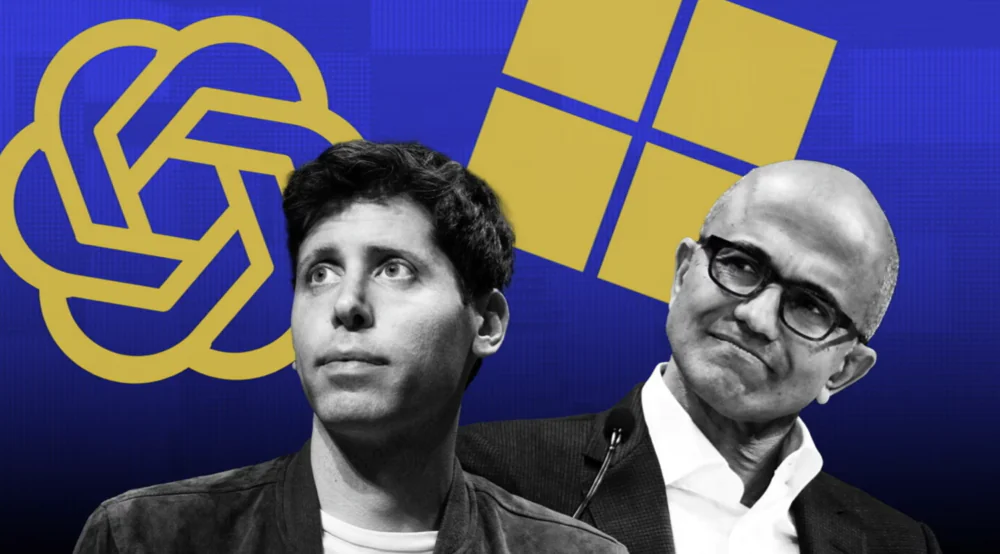
To recap, it all started when OpenAI’s board of directors dismissed CEO Sam Altman. Microsoft’s president, Satya Nadella, responded in a way that American journalists later described as a “play in the dark” by Satya. Altman was fired on Friday, but by Monday, after several calls between Nadella and OpenAI’s board members, Altman was reinstated, and a Microsoft representative (without voting rights) joined the board. Meanwhile, Altman informed investors that if things didn’t go as Microsoft had hoped, he already had a position lined up within the company and would likely bring along all of his key associates.

This event received widespread coverage in American tech media, where many commentators were struck by the cognitive dissonance surrounding Microsoft CEO Satya Nadella. Incidentally, Nadella has been trying to cultivate an image of accessibility and openness to collaboration. It’s hard to speculate on what exactly he should have said to the rebels at OpenAI, as he immediately put most of them in a subordinate position. However, it’s clear that the relationship between Microsoft and OpenAI has since cooled significantly. It all began with the symbols.
Microsoft quickly withdrew from the condition of having a seat on the board, fearing potential interference from regulatory and antitrust bodies. Shortly after, OpenAI announced a partnership with Apple. While not on the scale of the collaboration with Microsoft, this seemed to be the goal of the entire announcement. In exchange for a financially beneficial deal involving the integration of OpenAI’s ChatGPT service into Apple’s mobile devices, the company received… a board seat without voting rights. Although, ultimately, the OpenAI representative resigned for the same reasons as Microsoft’s. However, it was a striking performance aimed at an audience primarily made up of investors. Things have only gotten worse since then.
Read also: 10 Examples of the Strangest Uses of AI
Sam Altman started playing like Bill Gates, and almost succeeded
Altman and Nadella increasingly expressed subtle yet noticeable dissatisfaction in their public appearances regarding the collaboration between the two companies in computing power. Complaints about the resources available in Azure and the narrative that, although Microsoft’s cloud is the second largest in the world, it still isn’t enough, started to emerge.
Microsoft became both the main driver of OpenAI’s development—thanks to Azure’s computing power—and its primary obstacle, preventing the startup from using other cloud providers. Similarly, Microsoft expressed concerns about the cost of the technology, although still in a fairly measured tone. It’s also hard to ignore that both companies are competing in the customer market. For example, one of ChatGPT’s main competitors is Microsoft’s Copilot, which uses very similar technological foundations to OpenAI’s chatbot.
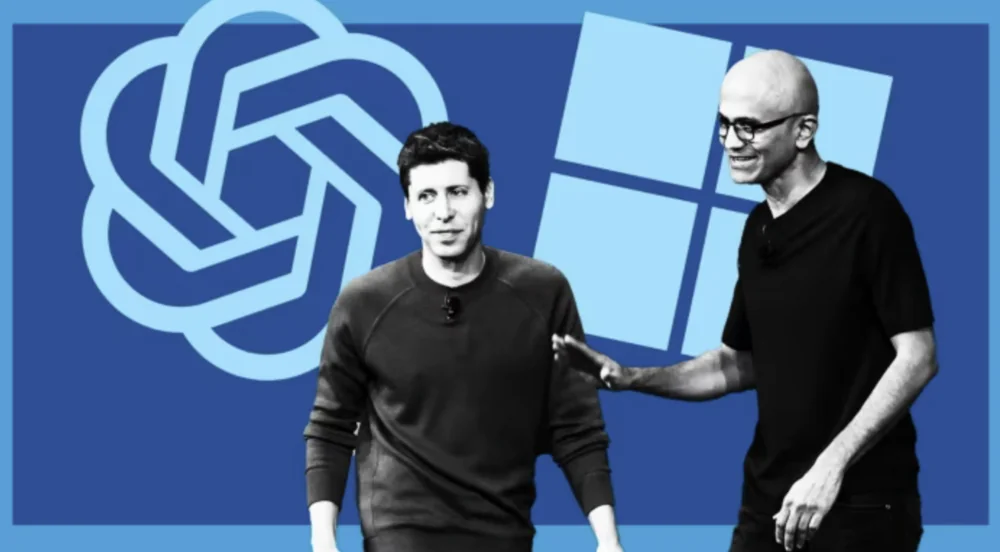
The issue is that even Satya Nadella has limited power, as defined by U.S. law. This is precisely why Microsoft didn’t simply acquire OpenAI, which would have clearly ensured full control over the company. Instead, it chose a more cautious approach to collaboration to avoid giving antitrust authorities grounds for intervention. The GPT technology doesn’t actually belong to Microsoft, and OpenAI has legitimate grounds to reconsider its partnership agreement—something that ultimately happened.
The company no longer needs to rely on Microsoft’s cloud for research and development, but still has to use it for commercial purposes, keeping Microsoft as a safety valve. OpenAI also confirmed that it will continue to collaborate with Microsoft on the highly profitable Stargate project, which is supported by the U.S. government. In other words, Altman simply wanted to sit on two chairs at once.

This somewhat resembles the story of the IT giant IBM and its collaboration with the then-young Microsoft. At that time, Bill Gates’ company was tasked with developing an operating system for IBM’s first personal computers and profiting from it. However, Gates, who was president of the company, made sure that the operating system wouldn’t belong to IBM and would remain under Microsoft’s control. When it became clear that assembling a PC compatible with IBM’s hardware and operating system was relatively simple and legal, the market became flooded with so-called IBM PC clones. As the owner of the MS-DOS system, which IBM funded, Microsoft could freely sell it to other manufacturers or even to homegrown PC assemblers. IBM, the leader of the new wave of the personal computer revolution for office and home users, ended up with nothing.
This somewhat resembles the story of the IT giant IBM and its collaboration with the then-young Microsoft. At that time, Bill Gates’ company was tasked with developing an operating system for IBM’s first personal computers and profiting from it. However, Gates, who was president of the company, made sure that the operating system wouldn’t belong to IBM and would remain under Microsoft’s control. When it became clear that assembling a PC compatible with IBM’s hardware and operating system was relatively simple and legal, the market became flooded with so-called IBM PC clones. As the owner of the MS-DOS system, which IBM funded, Microsoft could freely sell it to other manufacturers or even to homegrown PC assemblers. IBM, the leader of the new wave of the personal computer revolution for office and home users, ended up with nothing.
Read also: Panama Canal: History of Its Construction and Basis of U.S. Claims
The project could have been successful if not for the immediate response of DeepSeek and Satya Nadella
While OpenAI complains about the creators of the Chinese language model DeepSeek, accusing them of data theft and other potentially illegal activities, Microsoft quickly established a partnership with them. On its own, this wouldn’t be particularly noteworthy. Almost all major language models are hosted on Azure, including Meta’s Llama and Claude Sonnet. However, DeepSeek became the subject of widespread discussion for three reasons: the scandalous atmosphere surrounding it, its country of origin, and… its exceptional cost-effectiveness.
It must be acknowledged that there is increasing evidence that DeepSeek is much less cost-effective than its creators initially claimed. However, this doesn’t change the fact that Chinese engineers made several significant breakthroughs. Despite having Nvidia chips that are much older than those used by American competitors (due to sanctions imposed on China), they managed to optimize the training process to make the most of these chips—even optimizing Nvidia’s firmware. The creation of DeepSeek was likely much more expensive than what its creators have let on. Nevertheless, it remains significantly more energy- and cost-efficient, aside from the copyright issues.
At this point, the pressure that OpenAI can exert on Microsoft may simply come to an end. Altman and his company are now forced to focus on significantly improving their technology to regain a better position for negotiations. That’s why Satya Nadella doesn’t hide his satisfaction. The DeepSeek model is indeed impressive.
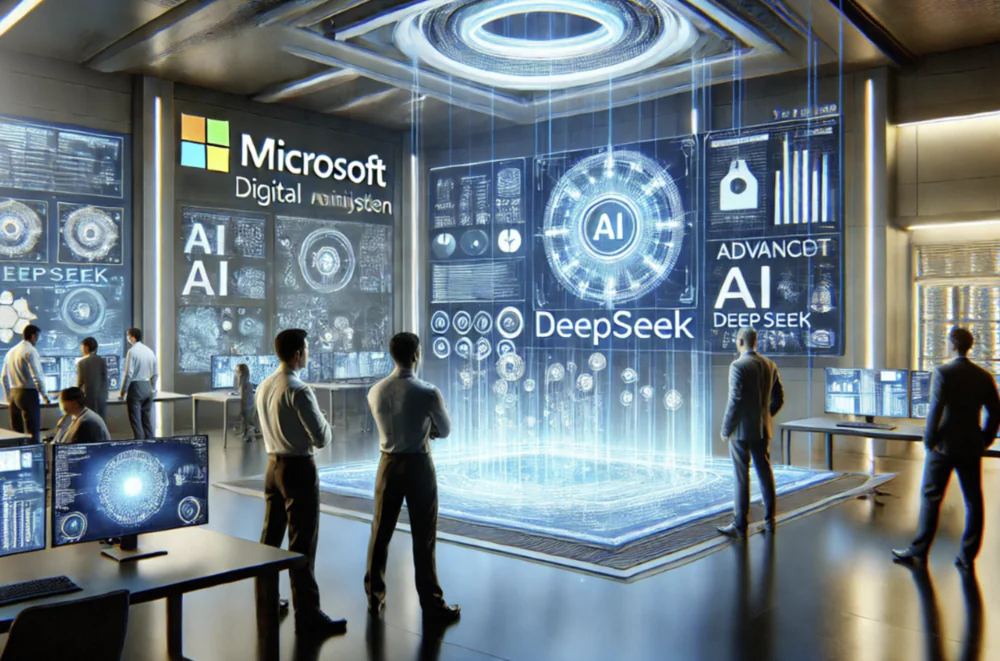
Chinese developers have managed to create a highly efficient language model, and it’s even open source. Not only does it perform calculations quickly during queries, but it’s also computationally efficient. “We must take China’s development very, very seriously,” comments Microsoft’s CEO, even comparing the “debut of the Chinese model to Jevons’ Paradox.” This well-known observation suggests that the more efficiently raw materials are used, the more of them are consumed.
It came as a revelation when Microsoft announced that it was moving the DeepSeek model to its cloud. In simple terms, while OpenAI tried to distance itself from its former partner, Microsoft played its cards more cleverly. Now, it remains to be seen who will have to convince whom.
However, experts point out another issue. As is often the case with strategically important Chinese corporations, there is now suspicion of collaboration with the Chinese government, which is not exactly friendly toward the Western world. There are concerns that the creation of DeepSeek was intended, among other things, to create disruption in the American IT market, which, without a doubt, it has succeeded in doing.
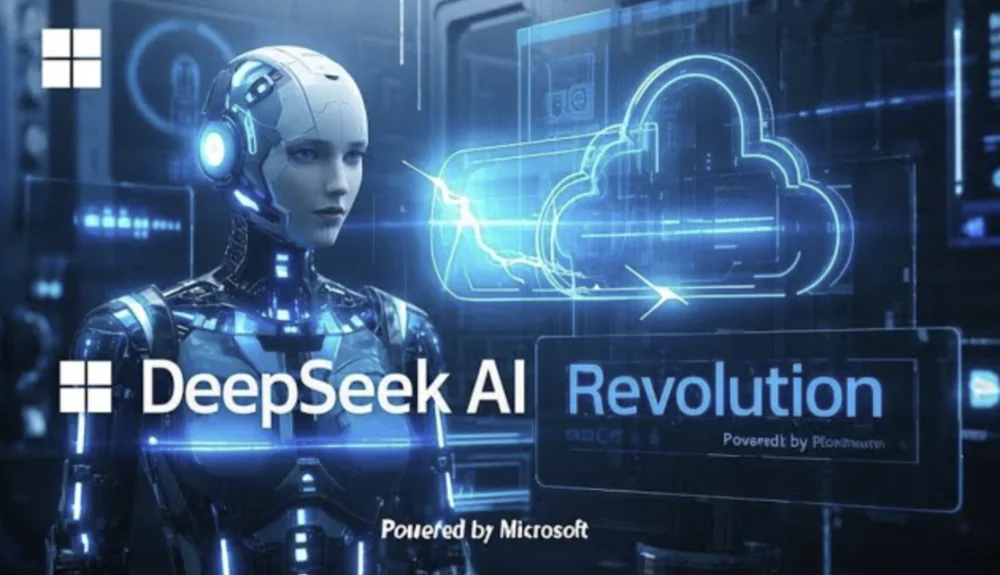
However, what this means for companies like Microsoft, Amazon, or Google is still unclear. For now, all we know is that with the emergence of DeepSeek, Sam Altman won’t be able to exit his long-term contract with Microsoft anytime soon. And how American Microsoft will navigate its dealings with the Chinese in the battle for control over OpenAI remains an open question. What is already clear, though, is that Microsoft will not be easily deceived.
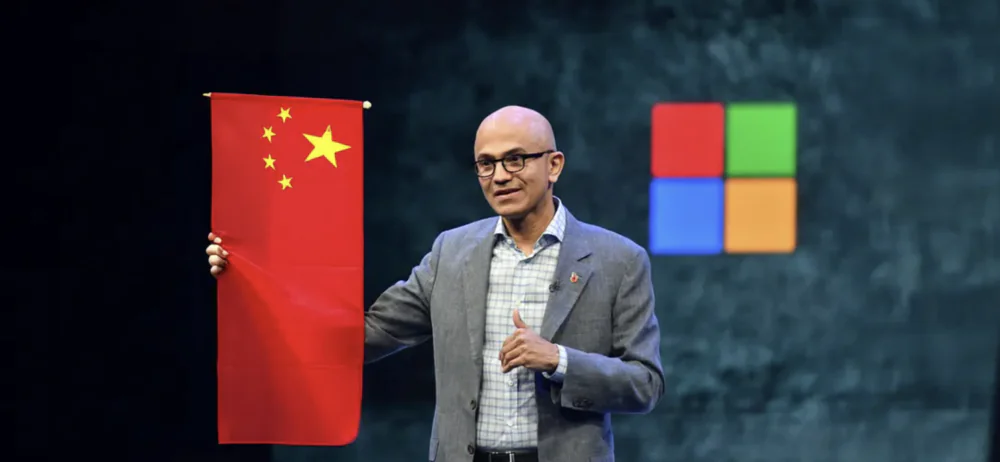
Microsoft is even willing to collaborate with DeepSeek, if it becomes legally possible. Bill Gates’ company is attempting to spread its eggs across different baskets, giving it room to maneuver. Now, the ball is in OpenAI’s court, which seems uncertain about how to resolve the situation. In any case, we are in for some intriguing developments in the world of AI research. One thing is certain — there will be no shortage of excitement.
Read also:
- How Taiwan, China and the US are fighting for technological dominance: the great chip war
- Most Fascinating Robotics Innovations of 2024
- End-to-End Encryption: What It Is and How It Works


